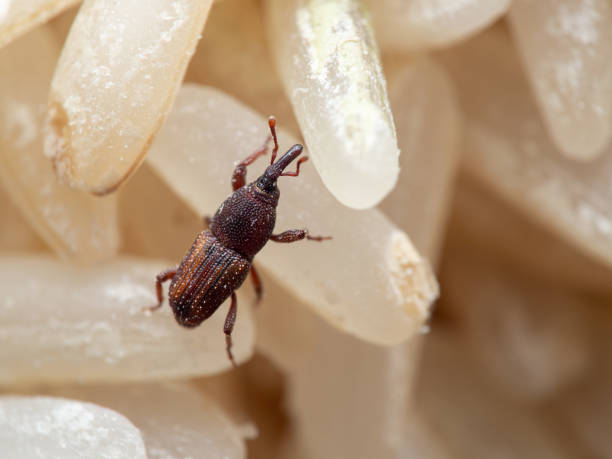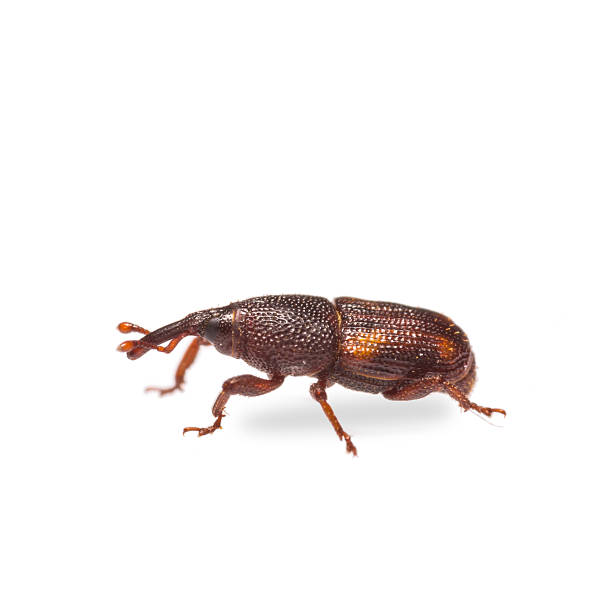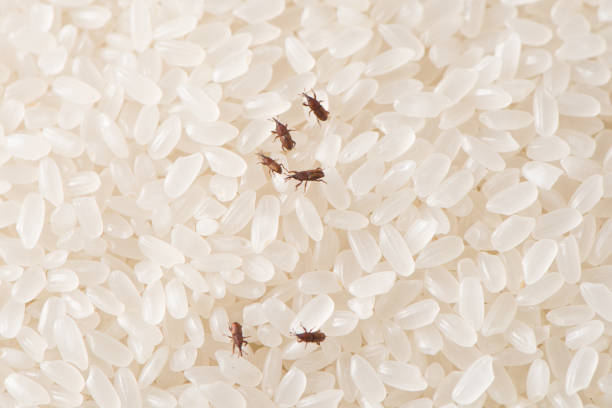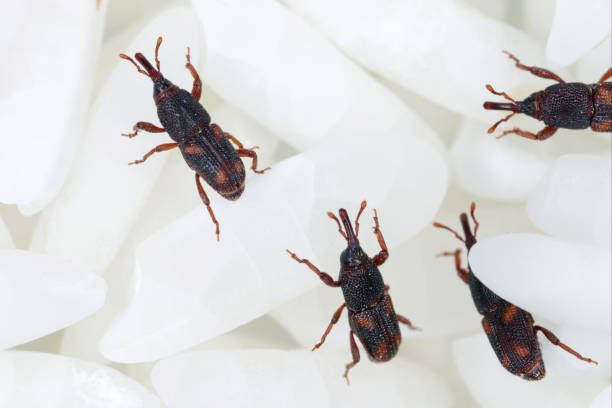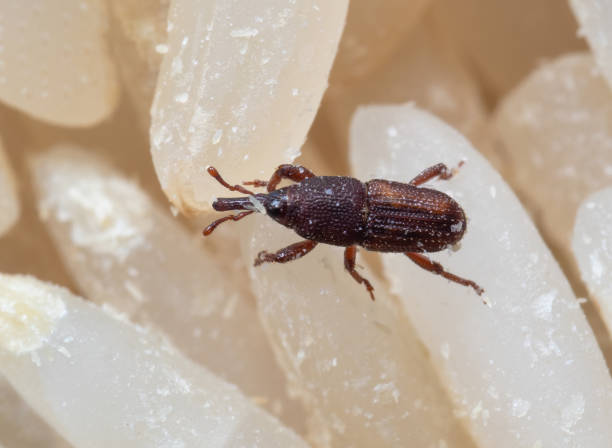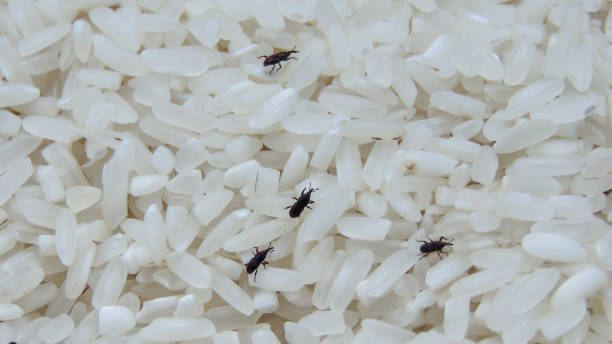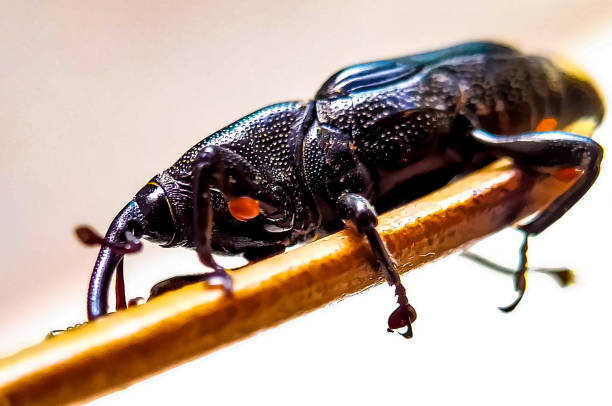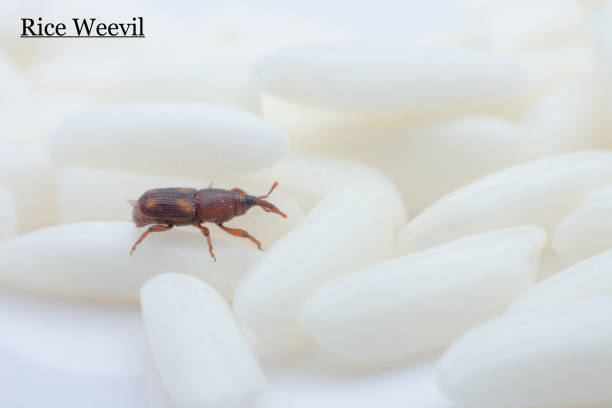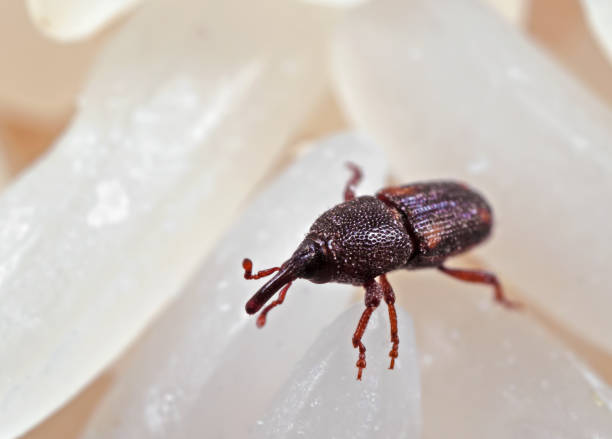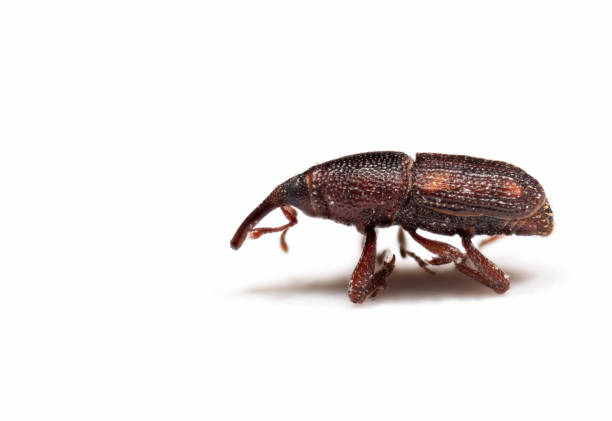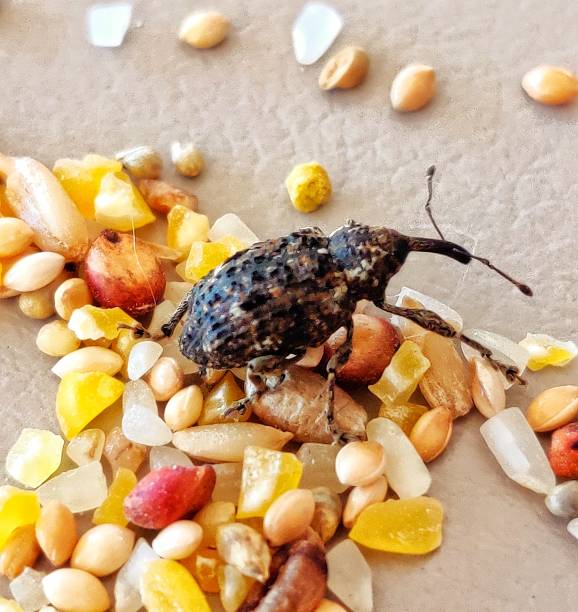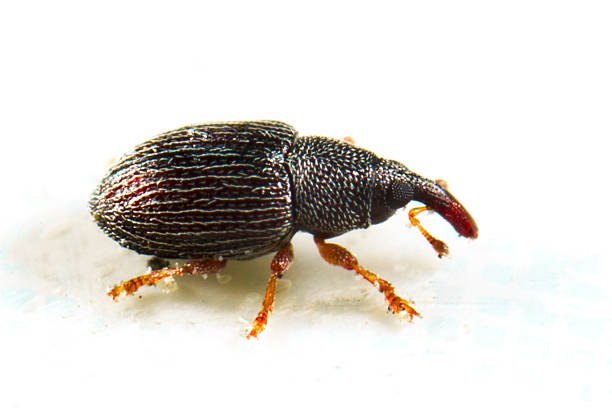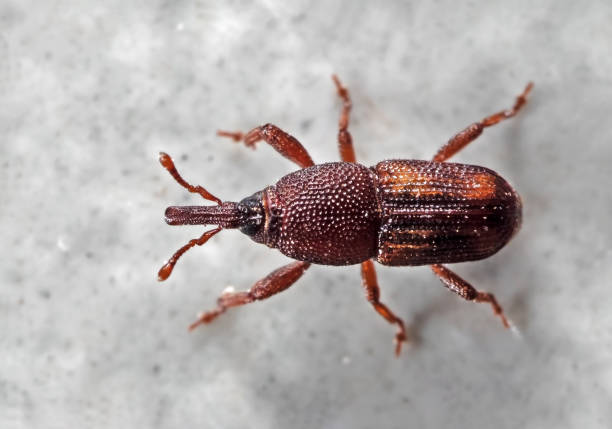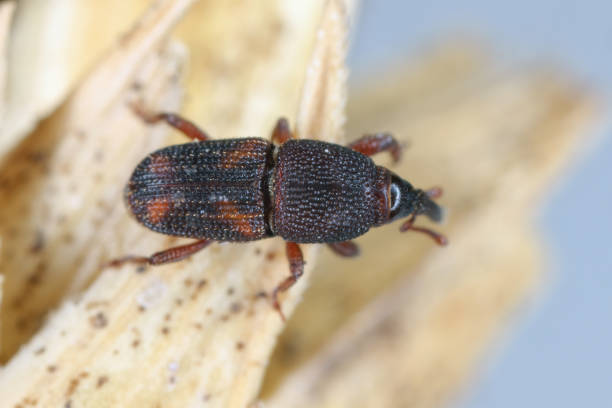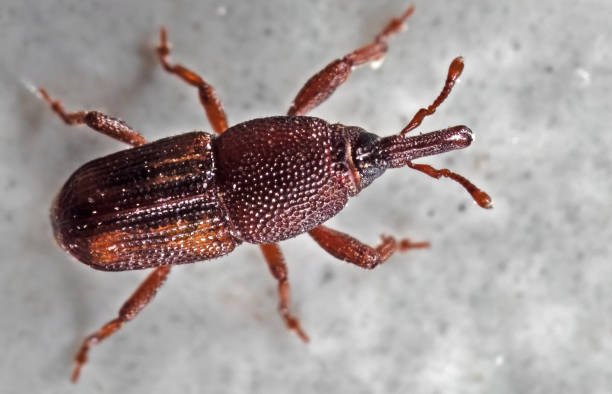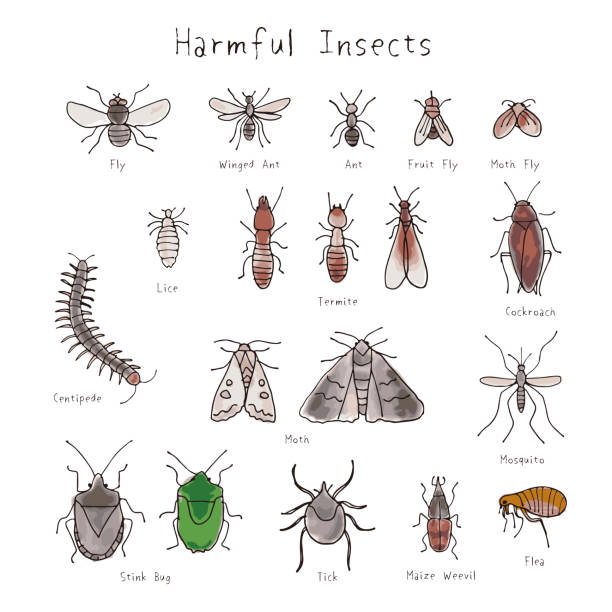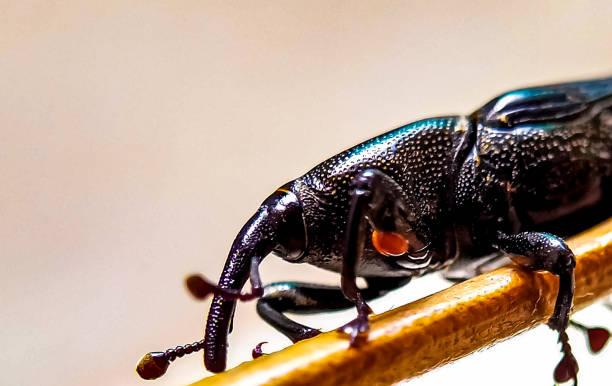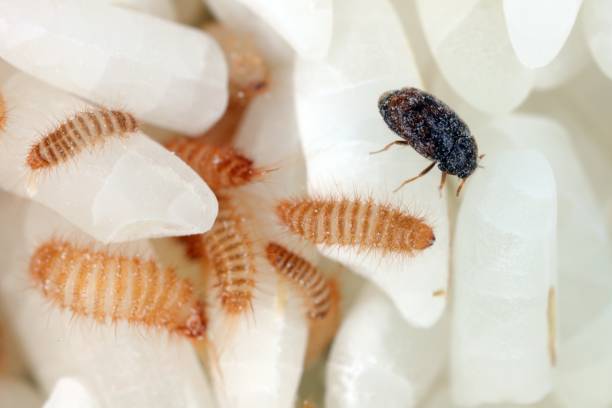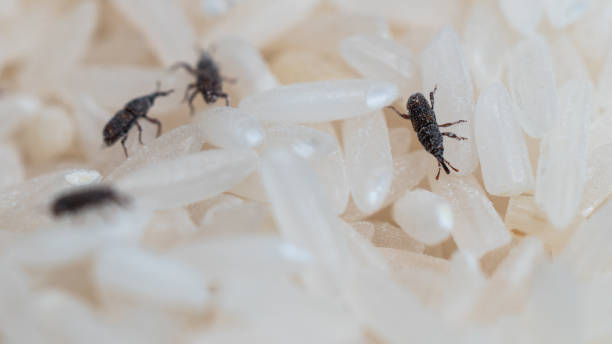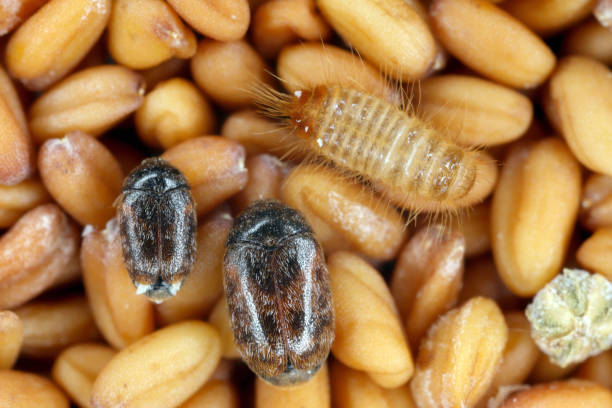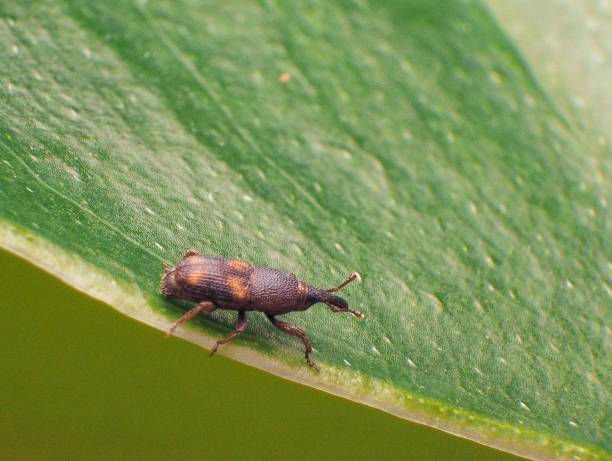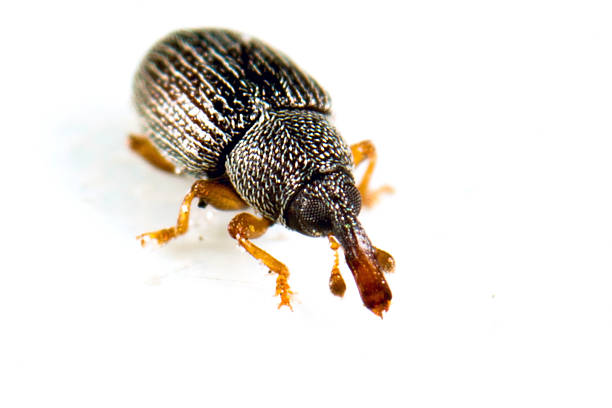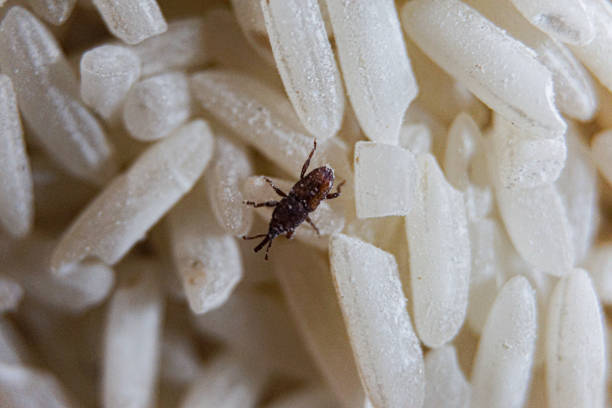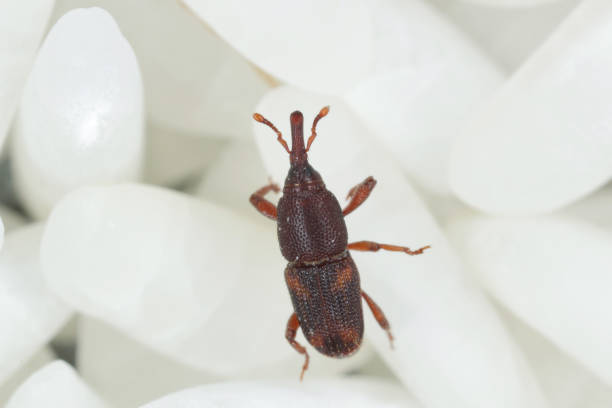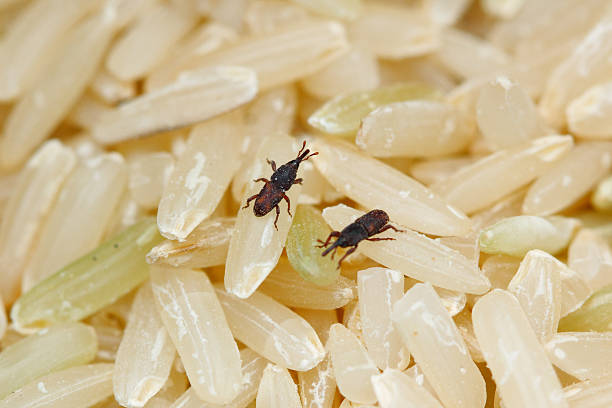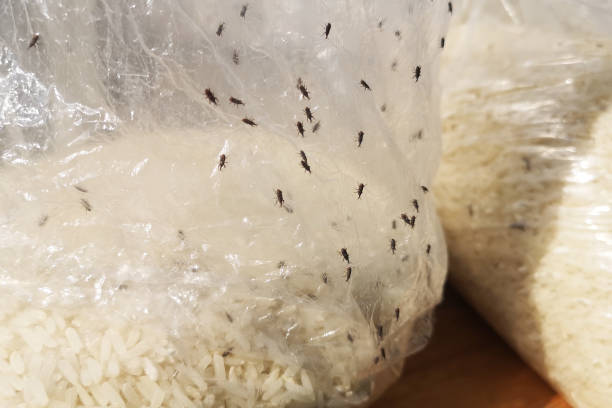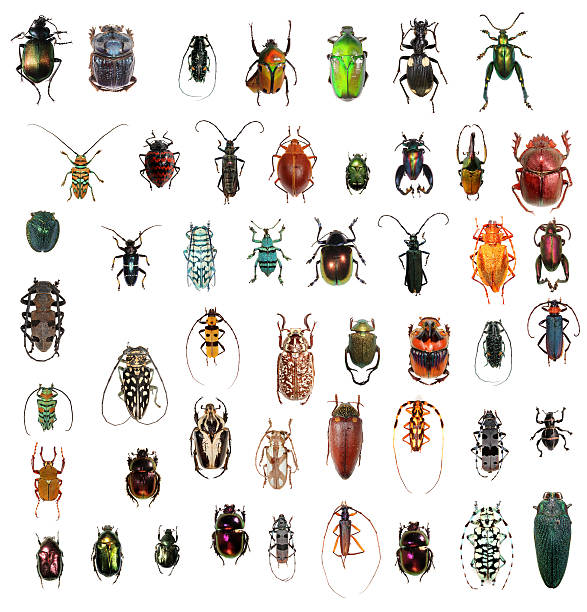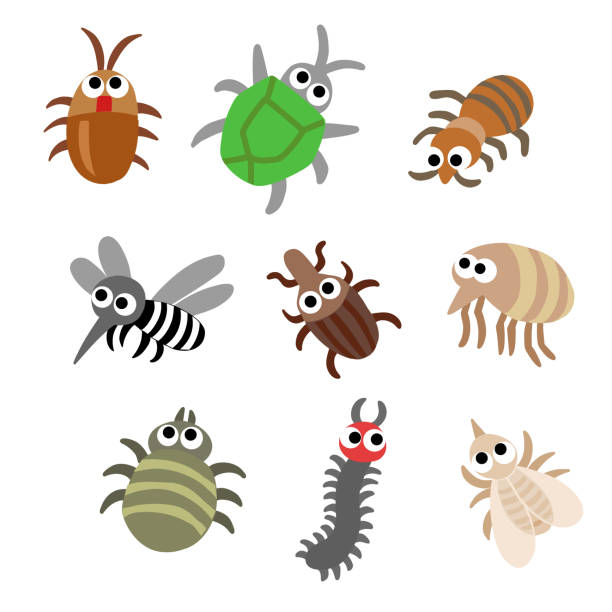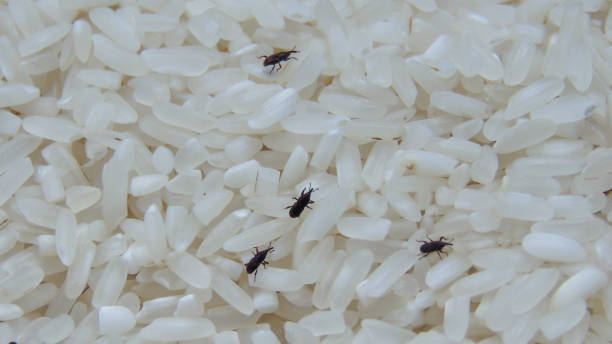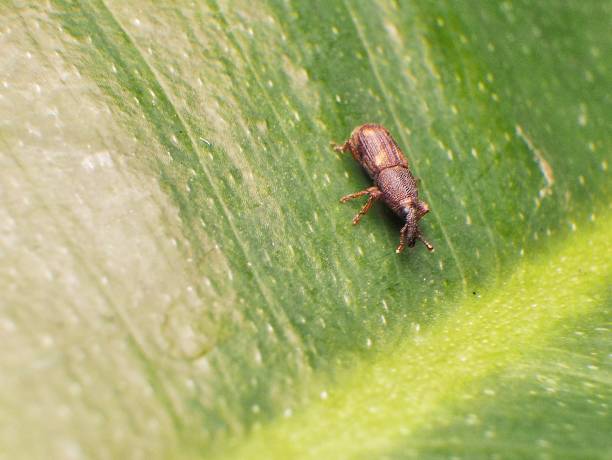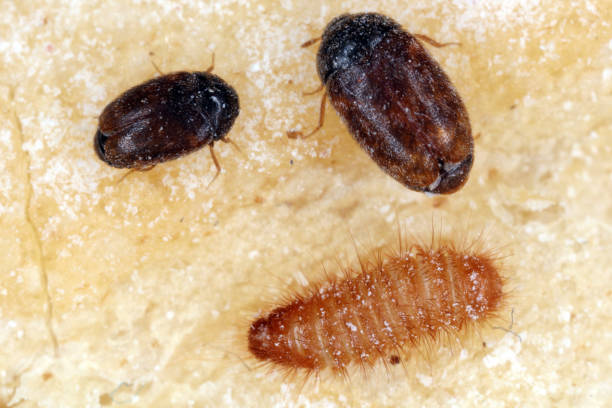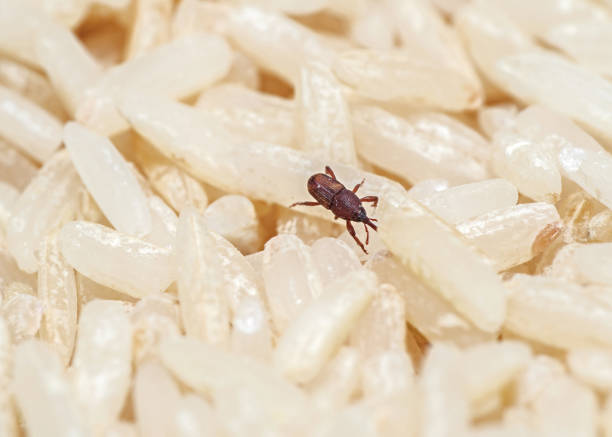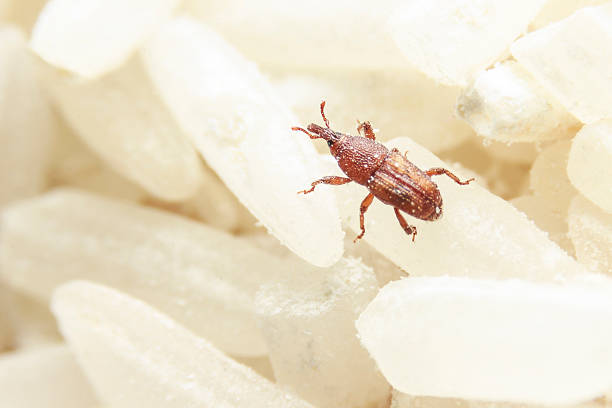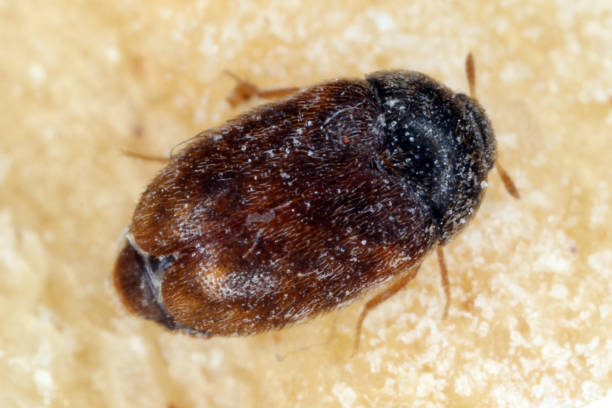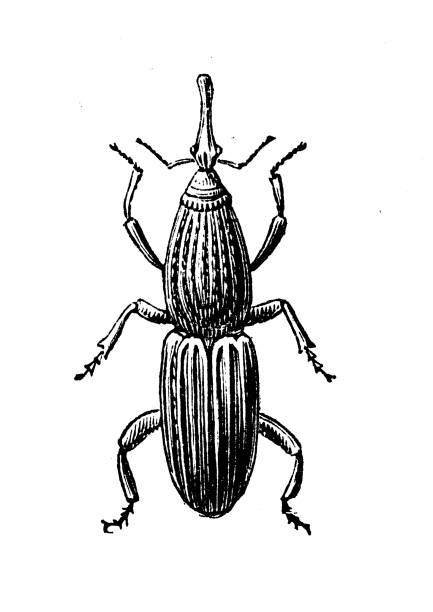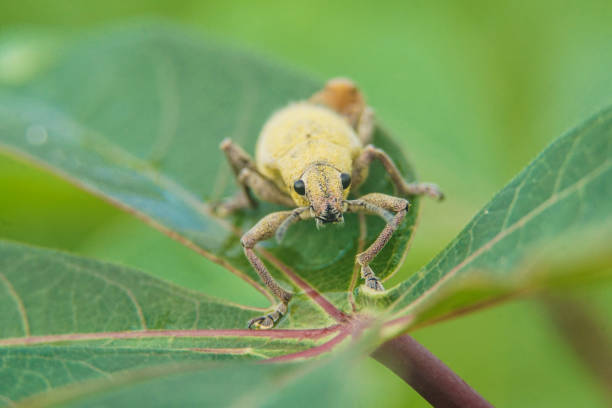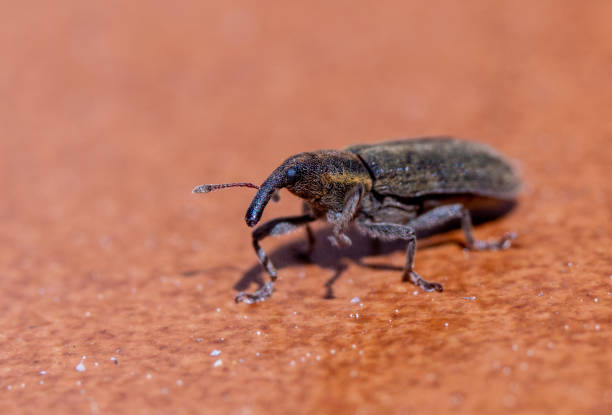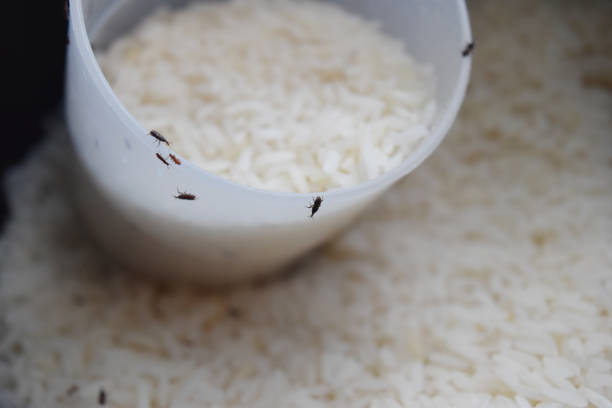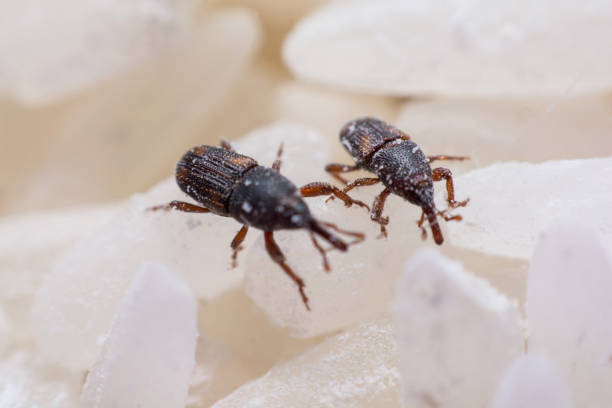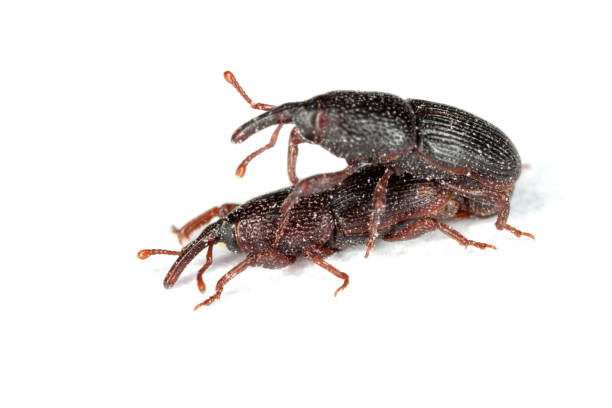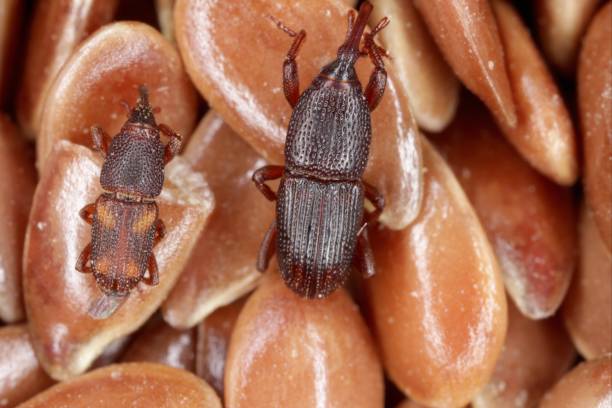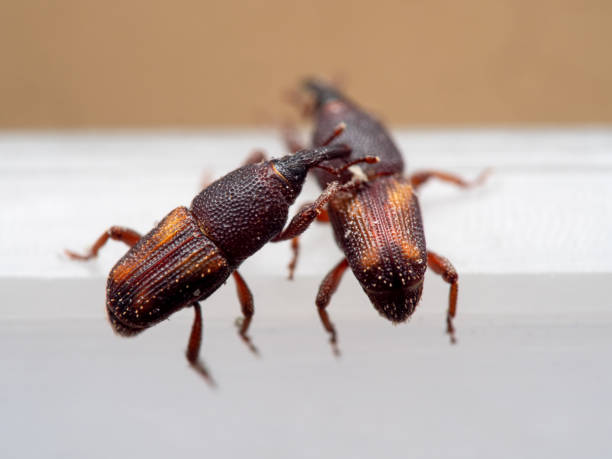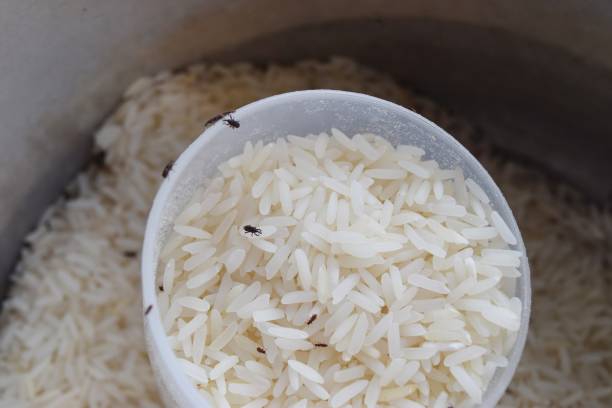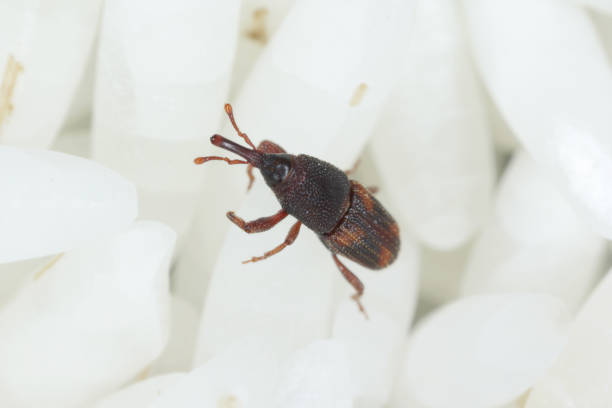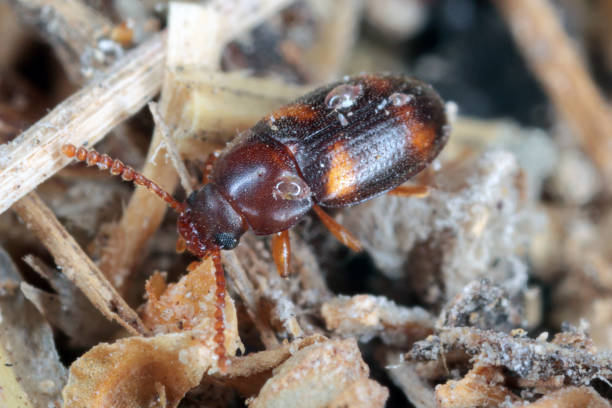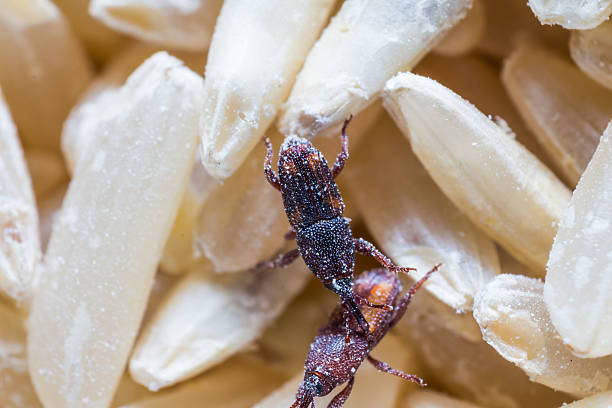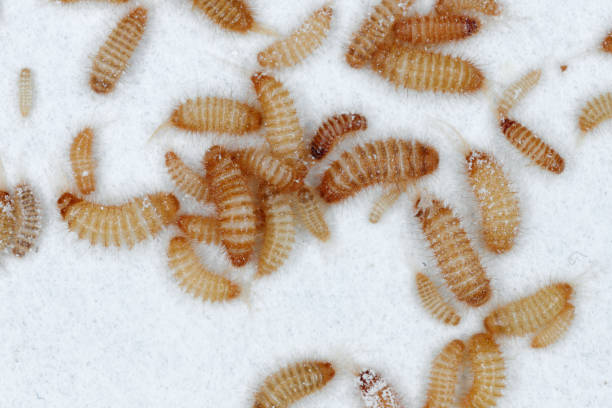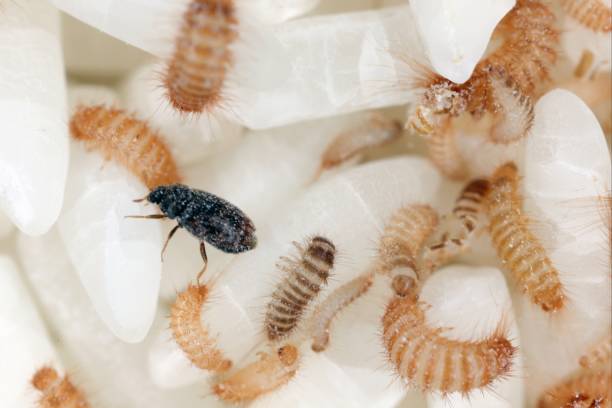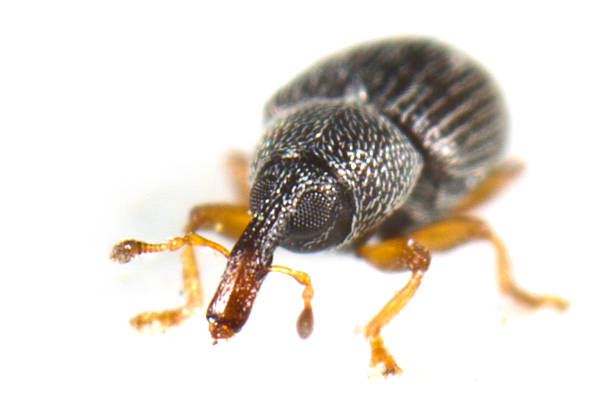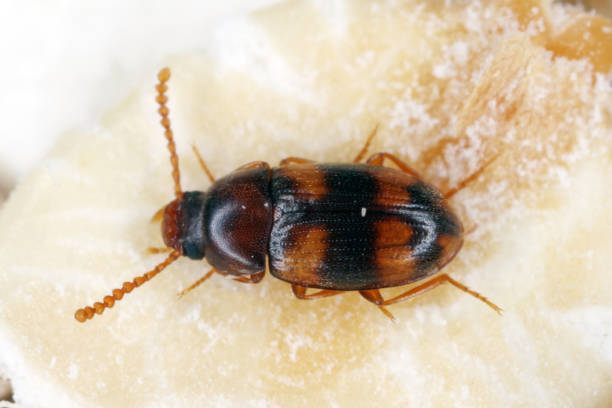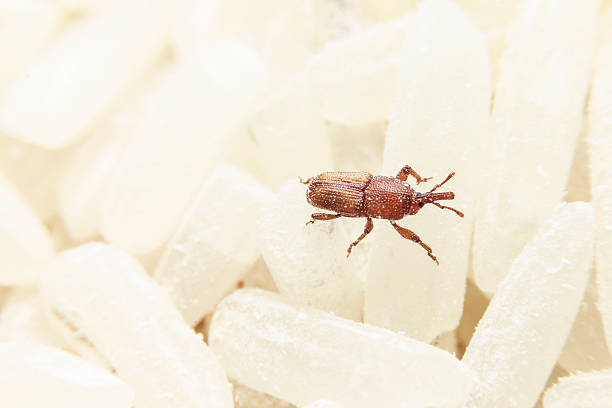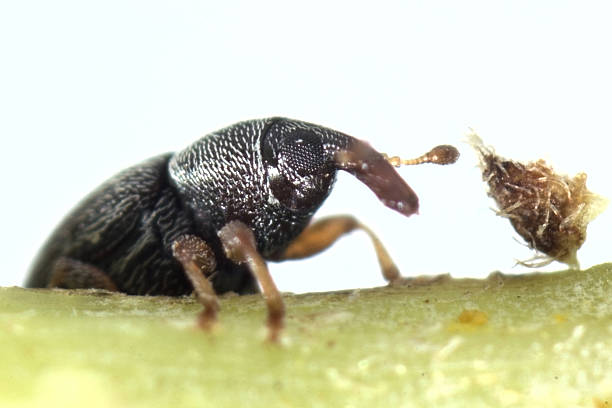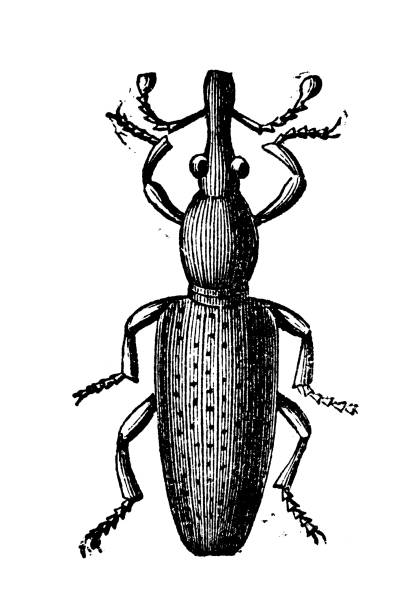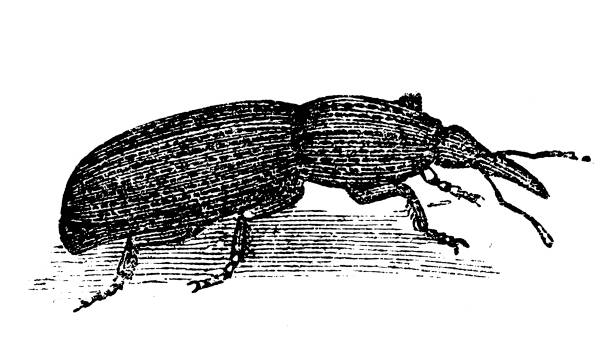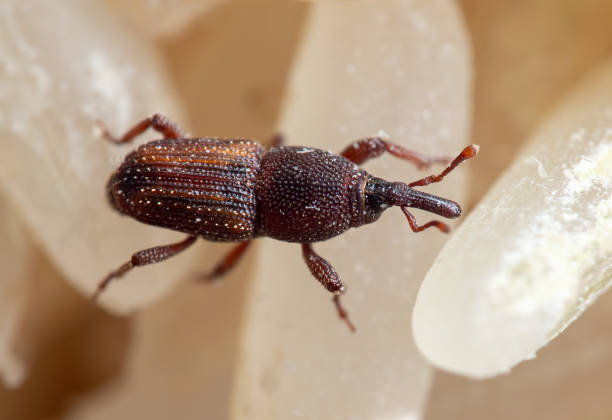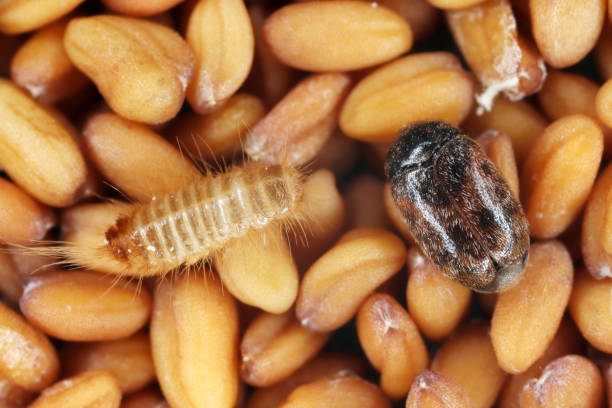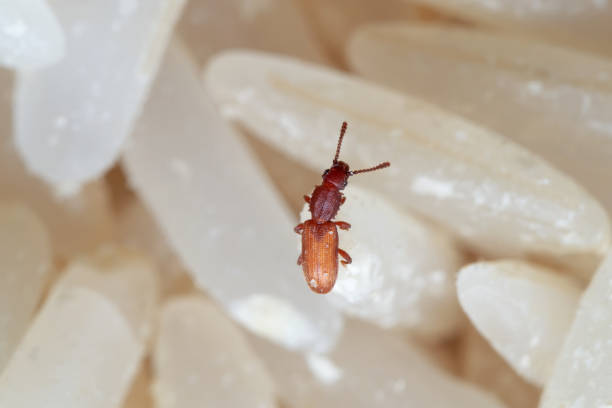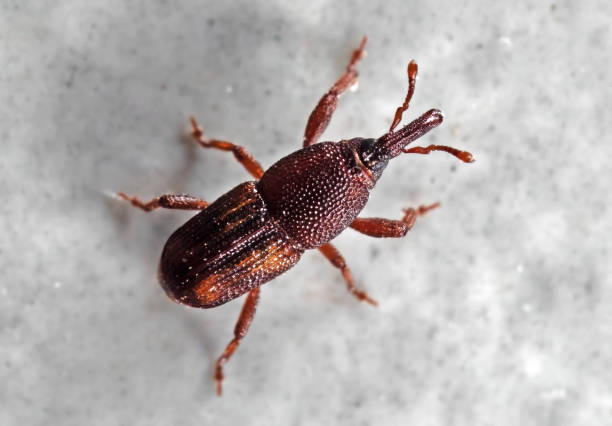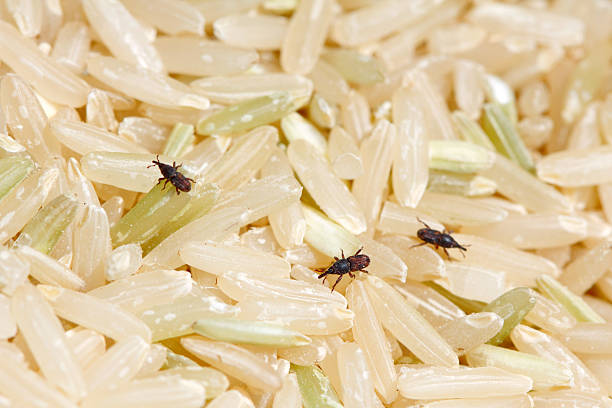
Rice Weevils Sitophilus Oryzae Pictures, Images and Stock Photos
Browse 290+ rice weevils sitophilus oryzae stock photos and images available, or start a new search to explore more stock photos and images.

Rice Weevils (Sitophilus oryzae) on milled rice. Rice Weevil is rice, wheat, crop and grain pest.
Macro Photography of Rice Weevil or Sitophilus oryzae on Raw Rice
Close up of adult rice weevils (Sitophilus oryzae) on white background
The rice weevil (Sitophilus oryzae) is a stored product pest which attacks seeds of several crops, including wheat, rice, and maize. Adult rice weevils are able to fly, and can live for up to two years. Females lay 2-6 eggs per day and up to 300 over their lifetime. The female uses strong mandibles to chew a hole into a grain kernel after which she deposits a single egg within the hole, sealing it with secretions from her ovipositor. The larva develops within the grain, hollowing it out while feeding. It then pupates within the grain kernel and emerges 2–4 days after eclosion. An adult emerges from inside a grain of rice. Male S. oryzae produce an aggregation pheromone called sitophilure ((4S,5R)-5-Hydroxy-4-methylheptan-3-one) to which males and females are drawn. A synthetic version is available which attracts rice weevils, maize weevils and grain weevils. Females produce a pheromone which attracts only males. Its gammaproteobacterial symbiont Candidatus Sodalis pierantonius str. SOPE is able to supply rice weevil with essential vitamins like pantothenic acid, riboflavin, and biotin. During larvae development, bacteria rely on up-regulation of type three secretion system genes and genes for flagellum so they can infect insect stem cells.
Macro Photography of Rice Weevil or Sitophilus oryzae on Raw Rice
Rice weevils or rice lice ate grains of rice crops. These tiny insects are exist when several crops are stored in a poor storage.
The wheat weevil (Sitophilus granarius) is perching on a log
Rice weevil crawls on rice grains. The rice weevil is a stored product pest which attacks seeds of several crops, including wheat, rice, and maize.
Macro Photography of Rice Weevil or Sitophilus oryzae on Raw Rice
Macro Photography of Rice Weevil Isolated on White Background with Copy Space
Weevill over seeds
a small insect with a hard shell, that eats grain, nuts and other seeds and destroys crops.
Macro Photography of Rice Weevil or Sitophilus oryzae on The Floor
Macro Photography of Rice Weevil or Sitophilus oryzae on The Floor
Macro of The wheat weevil (Sitophilus granarius) is perching on a log
The rice weevil (Sitophilus oryzae) is a stored product pest which attacks seeds of several crops, including wheat, rice, and maize.
a small insect with a hard shell, that eats grain, nuts and other seeds and destroys crops
Sitophilus granarius
The rice weevil (Sitophilus oryzae) is a stored product pest which attacks seeds of several crops, including wheat, rice, and maize. Adult rice weevils are able to fly, and can live for up to two years. Females lay 2-6 eggs per day and up to 300 over their lifetime. The female uses strong mandibles to chew a hole into a grain kernel after which she deposits a single egg within the hole, sealing it with secretions from her ovipositor. The larva develops within the grain, hollowing it out while feeding. It then pupates within the grain kernel and emerges 2–4 days after eclosion. An adult emerges from inside a grain of rice. Male S. oryzae produce an aggregation pheromone called sitophilure ((4S,5R)-5-Hydroxy-4-methylheptan-3-one) to which males and females are drawn. A synthetic version is available which attracts rice weevils, maize weevils and grain weevils. Females produce a pheromone which attracts only males. Its gammaproteobacterial symbiont Candidatus Sodalis pierantonius str. SOPE is able to supply rice weevil with essential vitamins like pantothenic acid, riboflavin, and biotin. During larvae development, bacteria rely on up-regulation of type three secretion system genes and genes for flagellum so they can infect insect stem cells.
Rice Weevils (Sitophilus oryzae) on milled rice. Rice Weevil is rice, wheat, crop and grain pest.
Thailand rice organic for storage until the insects.
beetle collection in XXXL size, beautiful colors and shapes.
Rice weevils, Sitophilus Oryzae, are harmful pests that are commonly found in several crops when they are in poor storage. This photo describes how the weevils live inside the rice that can destroy the grains.
The rice weevil (Sitophilus oryzae) is a stored product pest which attacks seeds of several crops, including wheat, rice, and maize.
Macro Photography of Rice Weevil or Sitophilus oryzae on Raw Rice
Rice weevil live in a bucket of rice .
macro photo of a small weevil beetle on a brown tile
Thailand rice organic for storage until the insects
Macro Photography of Two Rice Weevil or Sitophilus Oryzae
Jasmine rice is the staple food of Thailand.
The rice weevil (Sitophilus oryzae) is a stored product pest which attacks seeds of several crops, including wheat, rice, and maize. Adult rice weevils are able to fly, and can live for up to two years. Females lay 2-6 eggs per day and up to 300 over their lifetime. The female uses strong mandibles to chew a hole into a grain kernel after which she deposits a single egg within the hole, sealing it with secretions from her ovipositor. The larva develops within the grain, hollowing it out while feeding. It then pupates within the grain kernel and emerges 2–4 days after eclosion. An adult emerges from inside a grain of rice. Male S. oryzae produce an aggregation pheromone called sitophilure ((4S,5R)-5-Hydroxy-4-methylheptan-3-one) to which males and females are drawn. A synthetic version is available which attracts rice weevils, maize weevils and grain weevils. Females produce a pheromone which attracts only males. Its gammaproteobacterial symbiont Candidatus Sodalis pierantonius str. SOPE is able to supply rice weevil with essential vitamins like pantothenic acid, riboflavin, and biotin. During larvae development, bacteria rely on up-regulation of type three secretion system genes and genes for flagellum so they can infect insect stem cells.
Waste grain beetle - Alphitophagus bifasciatus is a species of beetle belonging to the family Tenebrionidae. Pest in food warehouses and homes.
Close up of adult rice weevils (Sitophilus oryzae) on the rice grain
a small insect with a hard shell, that eats grain, nuts and other seeds and destroys crops
Waste grain beetle - Alphitophagus bifasciatus is a species of beetle belonging to the family Tenebrionidae. Pest in food warehouses and homes.
Rice weevil live in a bucket of rice .
a small insect with a hard shell, that eats grain, nuts and other seeds and destroys crops
Illustration of a Grain Weevils, Calandra granaria
Macro Photography of Rice Weevil or Sitophilus oryzae on Raw Rice
Macro Photography of Sawtoothed Grain Beetle on Raw Rice
Macro Photography of Rice Weevil or Sitophilus oryzae on The Floor
